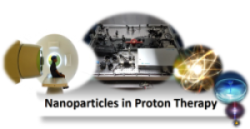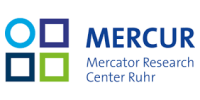Proton therapy is effective for the treatment of tumors, as the radiation dose in the surrounding tissue is low compared to conventional X-ray therapy. Ligand-free nanoparticles can be bound to biomolecules and subsequently attached to the tumor. This is the cornerstone to increase the efficiency of proton therapy.
Our main research goals and interests are:
- The function of nanoparticles as sensitizers (SYNGOPRO)
- The nanoparticle proton interactions (MERCUR-GK)

- Is there a particle concentration, size or mass effect?
- Sterilization of the fabrication process





References:
[1] Johny, J.; van Halteren, C.E.R.; Cakir, F.-C.; Zwiehoff, S.; Behrends, C.; Bäumer, C.; Timmermann, B.; Rauschenbach, L. ; Tippelt, S.; Scheffler, B.; Schramm, A.; Rehbock, C.; Barcikowski, S. Surface Chemistry and Specific Surface Area rule the Efficiency of Gold Nanoparticle Sensitizers in Proton Therapy. Chem. Eur. J (2023) e202301260
[2] Johny, J.; van Halteren, C.E.R.; Zwiehoff, S.; Behrends, C.; Bäumer, C.; Timmermann, B.; Rehbock, C.; Barcikowski, S. Impact of Sterilization on the Colloidal Stability of Ligand-Free Gold Nanoparticles for Biomedical Applications. Langmuir (2022) 38, 43, 13030-13047
[3] Behrends, C.; Bäcker, C.M.; Schilling, I.; Zwiehoff, S.; Weingarten, J.; Kröninger, K.; Rehbock, C.; Barcikowski, S.; Wulff, J.; Bäumer, C.; Timmermann, B. The radiosensitizing effect of platinum nanoparticles in proton irradiations is not caused by an enhanced proton energy deposition at the macroscopic scale. Phys. Med. Biol. (2022) 67, 155023
[4] Zwiehoff, S.; Johny, J.; Behrends, C.; Landmann, A.; Mentzel, F.; Bäumer, C.; Kröninger, K.; Rehbock, C.; Timmermann, B.; Barcikowski, S. Enhancement of Proton Therapy Efficiency by Noble Metal Nanoparticles Is Driven by the Number and Chemical Activity of Surface Atoms. Small (2021) 18, 2106383





